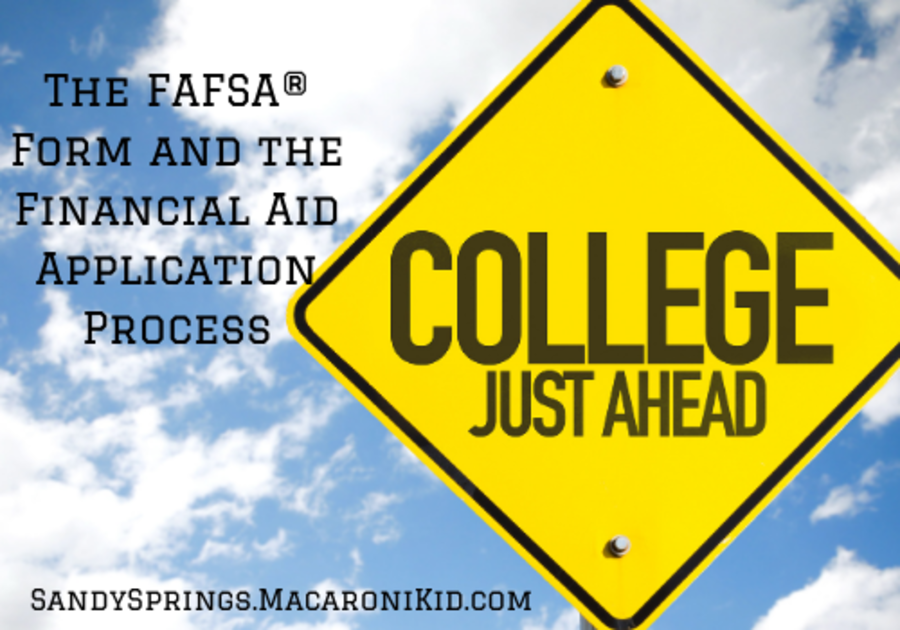If you need financial aid to help pay for college, you must complete the Free Application for Federal Student Aid (FAFSA) form. The 2021-2022 FAFSA form is available beginning Oct. 1, 2020. You should fill it out as soon as possible on or after Oct. 1 at the official government site, fafsa.gov.
It’ll be easier to complete the FAFSA form if you gather what you need ahead of time. Here’s what you’ll need to fill it out.
- Your FSA Account If you haven’t already, create a Federal Student Aid (FSA) account by setting up a username and password. Each student, and—if you’re a dependent—one of your parents, will need an FSA account (also known as an FSA ID) to complete the FAFSA process on fafsa.gov. We recommend creating your account early—even before you’re ready to complete the FAFSA form—to avoid delays in the process. That’s because you may need to wait up to three days to use your FSA account after creating it.
| Create an FSA Account |
IMPORTANT: Do NOT create an FSA account on behalf of someone else. That means parents should not create FSA accounts for their children and vice versa. Doing so may result in issues signing and submitting the FAFSA form and could lead to financial aid delays. (Also, it’s against the rules to create an FSA account for someone else.)
- Your Social Security Number You can find the number on your Social Security card. If you don’t have access to it or you don’t know where it is, you can request a new or replacement card from the Social Security Administration. If you are not a U.S. citizen but meet Federal Student Aid’s other eligibility criteria, you’ll also need your Alien Registration number. Both parents and students need this information for the FAFSA form.
- Your Driver’s License Number If you don’t have a driver’s license, don’t worry about this step.
- Your 2019 Tax Records On the 2021-2022 FAFSA form, you (and your parents if you are a dependent student) will report your 2019 income information.
Since you’ll probably already have filed your 2019 taxes by the time the FAFSA form is available, you may be eligible to import your tax information into the FAFSA form right away using the IRS Data Retrieval Tool (DRT).
Not everyone is eligible to use the IRS DRT; and the IRS DRT does not input all the financial information required on the FAFSA form. Therefore, you should have your 2019 tax return and 2019 IRS W-2 available for reference.
The IRS DRT is the fastest, most accurate way to input your tax return information into the FAFSA form. To address security and privacy concerns related to the IRS DRT, the tax return information you transfer from the IRS will not display on
- You cannot use your 2020 tax information. We understand that for some families, 2019 income doesn’t accurately reflect your current financial situation. If you have experienced a reduction in income since the 2019 tax year, you should complete the FAFSA form with 2019 information, and then contact each of the schools to which you’re applying to explain and document the change in income. Schools have the ability to assess your situation and adjust your FAFSA form if warranted.
You cannot update your 2021-2022 FAFSA form with your 2019 tax information after you file your 2020 tax return. The 2021-2022 FAFSA form requires only 2019 tax information.
- Records of Your Untaxed Income The FAFSA questions about untaxed income, such as child support, interest income, and veterans’ non-education benefits, may or may not apply to you. On the 2021-2022 FAFSA form, you’ll report 2018 tax or calendar year information when asked these questions. Find specific details that pertain to parents and students.
- Records of Your Assets (Money) This section includes savings and checking account balances, as well as the value of investments such as stocks, bonds, and real estate excluding your primary residence. Report the current amounts as of the date you sign the FAFSA form, rather than reporting the 2019 tax year amounts.
Note: Misreporting the value of investments is a common FAFSA mistake. Please carefully review what is and is not considered a student investment and parent investment to make sure you don’t over- or under-report. You may be surprised by what can (and cannot) be excluded.
- List of the School(s) You Are Interested in Attending Be sure to add any college you’re considering, even if you haven’t applied or been accepted yet.
- Even if there is only a slight chance you’ll apply to a college, list the school on your FAFSA form. You can always remove a school later if you decide not to apply, but if you wait to add a school, you could miss out on financial aid.
- The schools you list on your FAFSA form will automatically receive your FAFSA results electronically. They will use your FAFSA information to determine the types and amounts of financial aid you may receive.
- If you add a school to your FAFSA form and later decide not to apply for admission to that school, that’s OK! The school likely won’t offer you aid until you’ve been accepted anyway.
- You can list up to 10 schools at a time on your FAFSA form. If you’re applying to more than 10 schools, here’s what you should do.
TIP: To be considered for state aid, several states require you to list schools in a particular order (for instance, you might need to list a state school first). Find out whether your state has a requirement for the order in which you list schools on your FAFSA form.
| Here are some common myths—and the real scoop—about financial aid and the Free Application for Federal Student Aid (FAFSA®) form. |
MYTH: My parents make too much money, so I won’t qualify for any aid.
FACT: The reality is there’s no income cut-off to qualify for federal student aid. It doesn’t matter if you have a low or high income; most people qualify for some type of financial aid, including low-interest federal student loans. Many factors besides income—such as your family size and your year in school—are considered to determine your aid package.
TIP: When you fill out the FAFSA form, you’re automatically applying for funds from your state, and possibly from your school, in addition to federal student aid. In fact, some schools won’t even consider you for any of their scholarships (including academic scholarships) until you’ve submitted a FAFSA form. Don’t make assumptions about what you’ll get—fill out the application and find out!
MYTH: I support myself, so I don’t have to include my parents’ info on the FAFSA® form.
FACT: This is not necessarily true. Even if you support yourself, live on your own, or file your own taxes, you may still be considered a dependent student for FAFSA purposes. The FAFSA form asks a series of questions to determine your dependency status. If you’re independent, you won’t need to include your parents’ information on your FAFSA form, but if you’re dependent, you will. Find out who is considered a parent for FAFSA purposes. (It’s not as obvious as you might think.)
MYTH: I should wait until I’m accepted to a college before I fill out the FAFSA® form.
FACT: Don’t wait. You can get started now! As a matter of fact, you can start as early as the fall of your senior year of high school. You must list at least one college to receive your information. You SHOULD list all schools you’re considering even if you haven’t applied or been accepted yet. It doesn’t hurt your application to add more schools; colleges can’t see the other schools you’ve added. In fact, you don’t even have to go back and remove schools if you later decide not to apply or attend. If you don’t end up applying or getting accepted to a school, that school can just disregard your FAFSA form.
Remember:
- You can add up to 10 schools at a time to your FAFSA form.
- If you apply to more than 10 schools, here’s what to do.
- If you want to add a school after you submit your FAFSA form, you can log in and submit a correction.
- The schools you list will use your FAFSA information to determine the types and amounts of aid you may receive.
MYTH: If I didn’t receive enough money for school, I’m out of luck.
FACT: You still have options! If you’ve received federal, state, and college aid but still find yourself having to fill the gap between what your financial aid covers and what you owe your school, check out these additional options.
MYTH: I should call “the FAFSA® people” (Federal Student Aid) to find out how much financial aid I’ll receive and when.
FACT: We’re always here to help you through your student aid journey, but in this case, you should contact your school. Federal Student Aid does not award or disburse your aid, so we won’t be able to tell you what you’ll receive or when you’ll receive it. Your school’s financial aid office will have those answers. Just keep in mind that each school has a different timeline for awarding financial aid.
MYTH: There’s only one FAFSA® deadline and that’s not until June.
FACT: Nope! There are at least three deadlines you need to check: your state, school, and federal deadlines. You can find state and federal deadlines at our “FAFSA® Application Deadlines” page. You’ll need to check your school’s website for its FAFSA deadline. If you’re applying to multiple schools, make sure to check each school’s deadline and apply by the earliest one. Also, if you’re applying for any scholarships that require the FAFSA form for consideration, they might have a different deadline as well! Even if your deadlines aren’t for a while, we recommend you fill out the FAFSA form as soon as possible to make sure you don’t miss out on any aid.
MYTH: I only have to fill out the FAFSA® form once.
FACT: You have to fill out the FAFSA form every year you’re in school in order to stay eligible for federal student aid.
MYTH: I can share an FSA ID with my parent(s).
FACT: Nope, an FSA ID serves as part of a person’s identification, as well as their electronic signature, and should only be used by that individual. If you’re a dependent student, your parent will need to have his or her own FSA ID to sign your FAFSA form electronically. If your parent has more than one child attending college, he or she can use the same FSA ID to sign all applications. Both you and your parent will need a unique email address for each of your FSA IDs.
MYTH: Only students with good grades get financial aid.
FACT: While a high-grade point average may help you get into a good school and may help with academic scholarships, most federal student aid programs do not take grades into consideration when you first apply. Keep in mind that if you want to continue receiving aid throughout your college career, you will have to maintain satisfactory academic progress as determined by your school.
| Ready to Start? |
Get started with your FAFSA® form. If you’ve applied and been accepted to a college or career school that you listed on your FAFSA form, your school will calculate your aid and send you an electronic or paper financial aid offer telling you how much aid you’re eligible for at that school. Good luck!
Once you’re ready, you have several ways to complete the FAFSA form, including the fafsa.gov website or the myStudentAid mobile app. Using the app, you can fill out the FAFSA form safely and securely from your mobile device. The app also allows you to manage your FSA account, view your federal student aid history and loan information, and more. The myStudentAid app is available from both the Apple App Store (iOS) and Google Play (Android).
Find Federal Student Aid on Facebook, Twitter, and YouTube.
LIKE THIS ARTICLE: Sandy Springs Dunwoody Macaroni Kid is a free weekly newsletter and website focused on fun family events and information in Sandy Springs, Dunwoody, Chamblee, Doraville, Atlanta, and Perimeter. We gather together all kinds of local family events and activities each week and add useful information about classes, family-focused businesses, book and product reviews, recipes, crafts, school and camp guides and more. We proudly serve families in Sandy Springs, Dunwoody, Chamblee, Doraville, Atlanta, and Perimeter! Sandy Springs Dunwoody Macaroni Kid is full of useful local information like this PLUS tons of kid-friendly events on our event calendar. Have an event you'd like submitted to our calendar for consideration? Submit an event here. Like what you see here and want to get all the fun delivered to your inbox weekly? Subscribe to our FREE weekly e-newsletter for 411 on the local family fun. You can find Sandy Springs Dunwoody Macaroni Kid on Facebook, Twitter, Instagram, and Pinterest.






